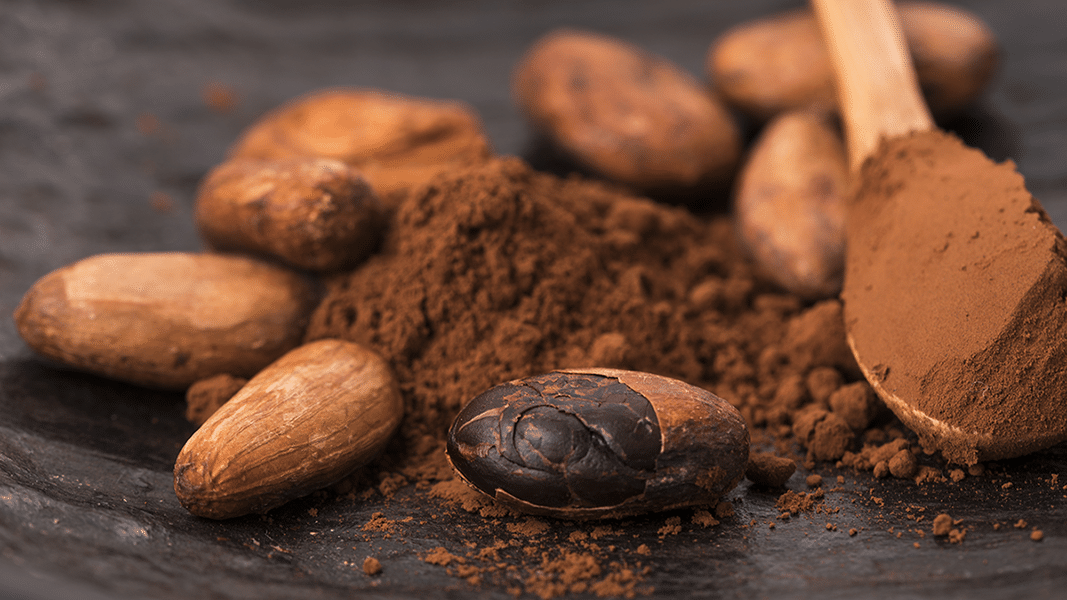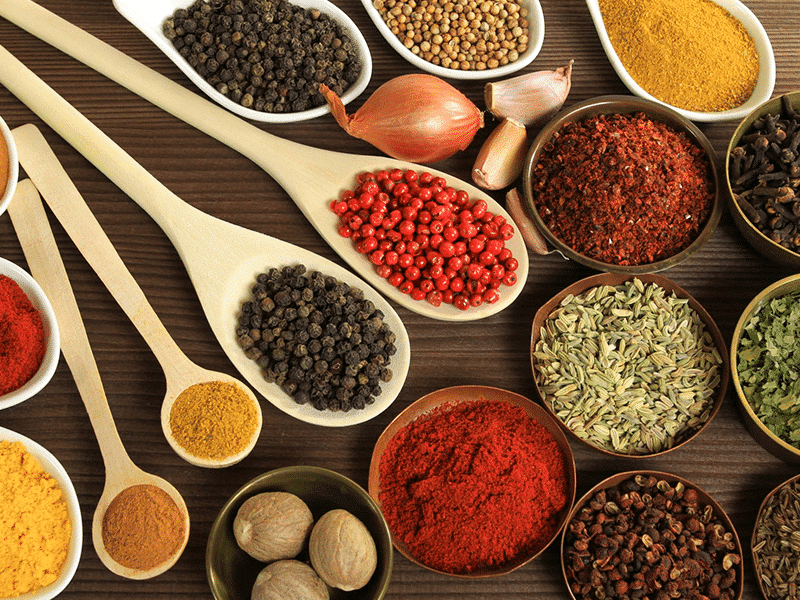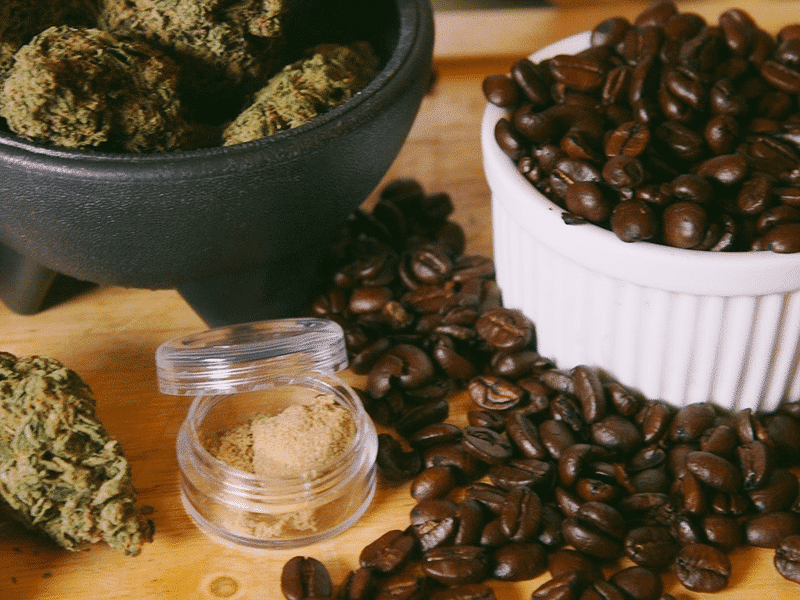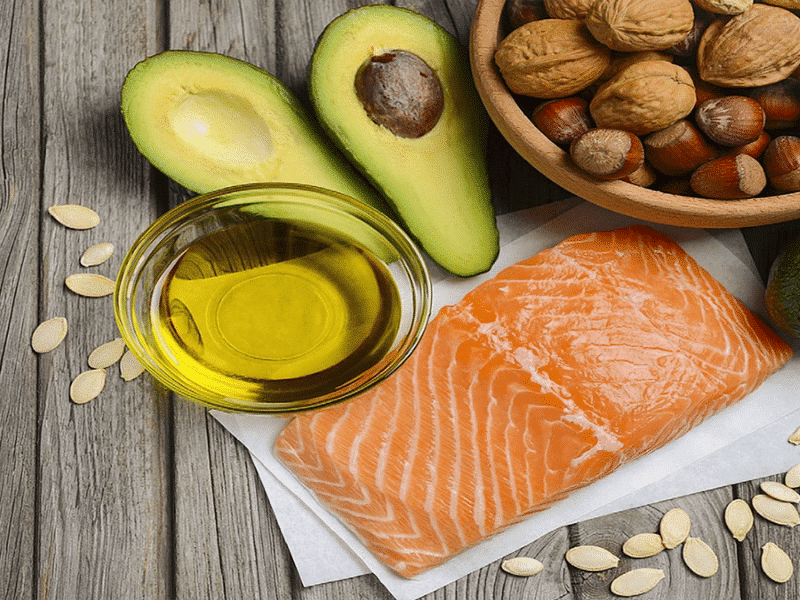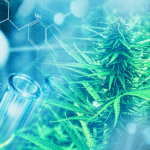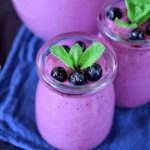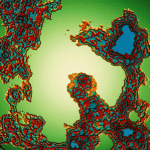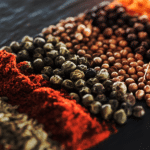A funny thing happened to me a few months ago. In the midst of a second bout of COVID, every morning I started drinking a cup of hot chocolate made from ceremonial cacao, the unprocessed paste of fermented beans from the cacao tree, which had been lurking at the back of my cupboard.
I can’t really say whether the warm comforting brew affected the trajectory of the virus. But rather than feeling down in the dumps and sorry for myself (my usual default mode when ill), I was actually positively cheerful.
As post-COVID life resumed, I decided to carry on with my morning cacao ritual. To my surprise (and delight), not only did my good mood continue but I felt brimming with energy and had no further need to kickstart my day with a caffeine fix.
As someone who’s teetered on the edge of antidepressants for years, this was an interesting and noteworthy sensation that continues at the time of writing. Moreover, the heart metrics on my scales showed that my pulse wave velocity (a measurement of arterial stiffness and heart health) and overall vascular age were moving in a downwards trajectory. (Move over Benjamin Button!)
Beyond my own experience, researchers have been investigating the heart and brain benefits of cacao and its more processed relatives, dark chocolate and cocoa, for many years. They have focused on cacao beans’ rich class of polyphenols called flavanols, as well as the alkaloid theobromine, which are the most likely culprits for the ability of cacao to improve cognition and heart health.
Food of the Gods
Cacao pods grow on the evergreen Theobroma Cacao tree, which is found in the equatorial countries of South America, West Africa, and Asia. For thousands of years, it has been revered as a sacred plant and used medicinally. The word theobroma finds its origin in the Greek word θεός (theos), meaning ‘god’, and βρῶμα (broma), meaning ‘food.’
Dating as far back as 1700 BC, cacao was consumed as a hot brew in Mesoamerica amongst the Olmec, Aztec, and Mayan civilizations. Indeed, so revered were cacao beans that they were even used as currency by some. With the arrival of the Spanish in the 16th century, the Aztec emperor Montezuma was observed to drink vast quantities of cacao possibly because of its purported aphrodisiac properties. The Spanish would eventually bring cacao and chocolate back to Europe, with the first chocolate houses opening in 1657 in London for the city’s well-heeled population in search of the latest fashion.
Over the centuries, however, with advancements in mass processing techniques and the addition of sugar and milk, cacao’s health benefits have largely been lost and it has become little more than a confectionery for the sweet-toothed or a romantic gesture on Valentine’s day.
A Modern-Day Plant Medicine
But in plant medicine circles, cacao has been making a comeback. UK-based Rebekah Shaman, who has been working with plant medicines since the late nineties, says she received the message loud and clear during an ayahuasca ceremony that she needed to bring cacao back to the UK and start offering it in a ceremonial setting.
At the time Rebekah knew little about cacao, but she understood that “in the West we’ve lost ceremony, we’ve lost our connection to plant medicines, we’ve lost our understanding of nature and the power of plants.” Undeterred, she flew to Guatemala, gave away most of her possessions, and filled her rucksack with twenty-one pounds of cacao for her return to Europe.
Drawing on her own training with Shamans in the Amazon, she started offering cacao ceremonies to ease the frazzled nerves of overwhelmed Londoners. The results were amazing. “People were really benefiting from taking cacao on a regular basis with it helping to shift mild depression, stress, and anxiety,” Rebekah recalls. Soon she launched her own business importing cacao from Peru and Ecuador.
Today cacao ceremonies are everywhere. From yoga retreats to ecstatic dance, cacao is now being consumed by spiritual seekers for improved mood, feelings of bliss, and its heart opening powers.
The Science of Cacao
To the hard-nosed scientists amongst us, this all may sound rather too “woo woo” to be taken seriously. But in the lab, cacao’s effects on increased blood flow, both to the heart and the brain, are thought to play a major role in the purported health benefits of this ancient remedy.
Thus far, researchers have focused on two key flavanols found in cacao, epicatechin and catechin, plus theobromine. Like caffeine, which is also found in small amounts, theobromine is a methylxanthine (a bronchodilator and mild stimulant).1 Despite reports from regular cacao consumers of alleviation of low mood, stress, and anxiety, researchers have mainly focused on whether the flavanols and theobromine might have some kind of neuroprotective effect on the brain, with the corollaries of improving cognition, concentration, and memory. In one study, mice fed a theobromine-rich diet performed cognitively better in tasks than the non-theobrome group.2
Caffeine and theobromine are both vasodilators through the inhibition of adenosine receptors.3 But compared to its methylxanthine cousin caffeine, theobromine doesn’t appear to be addictive, perhaps due to its longer half-life4; a short half-life implies stronger withdrawal symptoms.
Cacao also contains magnesium, copper, chromium, and other minerals, as well as various amines – serotonin, tryptophan, phenylethylamine, tyrosine, tryptamine, and tyramine. But the jury is still out whether the amines have any real effect as they are broken down in the gut, liver, and kidneys by monoamine oxidase enzymes.
And there is also a small amount of anandamide,5 the endocannabinoid, in cacao. But it’s not clear whether anandamide is present in sufficient quantities to interact with the endocannabinoid system in any meaningful way.
Cacao & the Brain
Apart from nourishing our gut microbiome, most plant-based foods are rich in flavonoids, which if consumed regularly, may help to decrease the risk of dementia.6 (A flavonol is a type of flavonoid found in many fruits and vegetables.) With data already linking the daily consumption of chocolate to lower cognitive decline,7 it’s thought that the neuroprotective effects of flavonoids and promotion of neurogenesis may contribute to their overall neurobiological benefits for the brain.8
As vasodilators, these dietary compounds also improve the function of the endothelium, the thin membrane lining the inside of the heart and blood vessels, by increasing nitric oxide bioavailability. Flavonoids not only help regulate blood pressure, but also increase cerebral blood flow, and this may help to explain why cacao appears to be so good for both our heart and our brain, which after all are intimately connected.9
Research comparing the daily administration of chocolate infused with low (48mg), medium (520mg), and high (993mg) amounts of flavanols to elderly subjects – some with mild cognitive impairment,10 others without11 showed higher levels of flavanols brought about superior improvements in processing speed, executive function, and working memory in both groups. (However, a recently published study in older women and men comparing a cocoa supplement containing 500mg of flavanols, with a placebo, and a commercially available multivitamin, found only the multivitamin improved their cognition.)12
It’s noteworthy that insulin resistance, blood pressure, and lipid peroxidation (the cell damaging process by which free radicals steal electrons in cell membranes) were all reduced in participants in the high and intermediate-flavanol groups. Increased blood flow in the dentate gyrus of the hippocampus, a brain structure particularly affected by ageing, after high cocoa flavanol intake, may account for improvements in memory.13
Other research appears to link impaired cerebral blood flow with depression14 and increases in cerebral blood flow with improvements in depressive states following treatment with antidepressants.15
Cacao for Heart Health
Cardiovascular diseases are the leading cause of death globally. Along with lifestyle measures such as giving up smoking and getting more exercise, diet is thought to be a key factor to improving cardiovascular health.
Flavonoids found in fruit and vegetables positively impact our heart health not only through their antioxidant action but also by facilitating vasodilation, regulating apoptotic processes in the endothelium, and reducing inflammation.16
Studies have found that both flavanols in cacao, catechin and epicatechin, improve cardiovascular function, lowering blood pressure17 and reducing arterial stiffness. One recent study18 showed that administering flavanol rich cocoa over eight days in healthy volunteers lowered blood pressure in those with somewhat elevated blood pressure although still within the normal range. Interestingly, there was no change in subjects whose blood pressure was already low.
In another study,19 patients with hypertension found that eating 100 grams of dark chocolate containing 88mg of flavonols did the triple whammy of lowering blood pressure, insulin resistance, and LDL cholesterol (the so-called bad cholesterol).
In fact, the cholesterol improving benefits of eating dark chocolate20 go even further with researchers finding it not only lowered LDL but also increased good cholesterol (HDL), in all likelihood due to the winning combination of the flavanols and theobromine.
But a randomized trial21 comparing cocoa with typical levels of theobromine (150mg) and 850mg of pure theobromine found that only the high dose of pure theobromine changed cholesterol levels. A word of caution regarding the overconsumption of theobromine: increases in cerebral blood flow can trigger migraines in some people and consuming high levels of theobromine can cause nausea, loss of appetite, headaches and negative mood changes. Theobromine is also the compound responsible for the toxicity of chocolate to dogs.
Possible Drug Interactions
It’s easy to get excited about the benefits of cacao for our overall health. However, some care is required when consuming ceremonial grade cacao paste, which is minimally processed and therefore retains higher levels of the naturally occurring compounds, some of which may cause drug interactions.
As previously mentioned, cacao contains serotonin (and tryptophan, its precursor). For anyone taking Monoamine Oxidase Inhibitor Medication (commonly prescribed for depression), cacao may not be advisable. MAO inhibitors work by inhibiting the breakdown of a number of neurotransmitters in the body, including serotonin.
MAO inhibitors will also prevent the breakdown of the serotonin found in cacao, which could increase the neurotransmitter to dangerous levels, potentially causing “serotonin syndrome,” with symptoms such as agitation, insomnia, confusion, loss of muscle coordination, and muscle twitching. (Yes, it is possible to have too much serotonin).
Furthermore, MAO inhibitors inhibit the breakdown of tyramine,22 also found in cacao. Overly high levels of tyramine can cause sudden increases in blood pressure and migraines, which is why patients on MAO inhibitors should avoid tyramine-rich foods (such as strong cheeses, cured meats, and over-ripe fruits).
There is also a school of thought that the tetrahydro β carbolines23 found in cacao are themselves naturally occurring MAO inhibitors. As well as potentially contributing to cacao’s antidepressant effect, the presence of these compounds may increase the potential for drug interactions if one is taking antidepressants, including SSRIs (Selective Serotonin Reuptake Inhibitors), although this has yet to be fully investigated. It probably means that anyone prescribed serotonin-boosting antidepressants should avoid high doses of unprocessed cacao products.
For most of us though, whether we consume ceremonial cacao as a morning ritual to set intentions for the day, or if we simply eat a couple of pieces of quality dark chocolate derived from fair-trade sustainably sourced cacao, there really is little to lose and a lot to gain by partaking of the sacred plant medicine from the theobroma cacao tree.
To hear Rebekah Shaman’s interview with Mary Biles, check out the podcast Cannabis Voices.
Mary Biles, a UK-based journalist, educator, and Project CBD contributing writer, is the author of The CBD Book (Harper Collins, UK). © Copyright, Project CBD. May not be reprinted without permission.
Footnotes
- Daniel Janitschke et al. Methylxanthines and Neurodegenerative Diseases: An Update. Nutrients. 2021 Mar; 13(3): 803.
- Mitsugu Yoneda et al. Theobromine up-regulates cerebral brain-derived neurotrophic factor and facilitates motor learning in mice. J Nutr Biochem 2017 Jan;39:110-116.
- O H Choi et al. Caffeine and theophylline analogues: correlation of behavioral effects with activity as adenosine receptor antagonists and as phosphodiesterase inhibitors. Life Sci 1988;43(5):387-98.
- S M Tarka Jr et al. Theobromine kinetics and metabolic disposition. Clin Pharmacol Ther 1983 Oct;34(4):546-55.
- Astrid Nehlig, The neuroprotective effects of cocoa flavanol and its influence on cognitive performance. Br J Clin Pharmacol. 2013 Mar; 75(3): 716–727.
- David Vauzour, Effect of flavonoids on learning, memory and neurocognitive performance: relevance and potential implications for Alzheimer’s disease pathophysiology. J Sci Food Agric 2014 Apr;94(6):1042-56.
- Afonso Moreira et al. Chocolate Consumption is Associated with a Lower Risk of Cognitive Decline. May 2016 Journal of Alzheimer’s disease: JAD 53(1).
- Spencer, J. (2008). Food for thought: The role of dietary flavonoids in enhancing human memory, learning and neuro-cognitive performance: Symposium on ‘Diet and mental health’. Proceedings of the Nutrition Society, 67(2), 238-252. doi:10.1017/S0029665108007088.
- Davide Grassi et al. Flavanol-rich chocolate acutely improves arterial function and working memory performance counteracting the effects of sleep deprivation in healthy individuals. J Hypertens 2016 Jul;34(7):1298-308.
- Giovambattista Desideri et al. Benefits in cognitive function, blood pressure, and insulin resistance through cocoa flavanol consumption in elderly subjects with mild cognitive impairment: the Cocoa, Cognition, and Aging (CoCoA) study. Hypertension 2012 Sep;60(3):794-801.
- Daniela Mastroiacovo et al. Cocoa flavanol consumption improves cognitive function, blood pressure control, and metabolic profile in elderly subjects: the Cocoa, Cognition, and Aging (CoCoA) Study–a randomized controlled trial. Am J Clin Nutr 2015 Mar;101(3):538-48.
- Laura D Baker et al. Effects of cocoa extract and a multivitamin on cognitive function: A randomized clinical trial. Alzheimer’s and Dementia. The Journal of the Alzheimer’s Association.
- Adam M Brickman et al. Enhancing dentate gyrus function with dietary flavanols improves cognition in older adults. Nature Neuroscience volume 17, Pages 1798–1803 (2014).
- Meta-analysis shows difference between antidepressants and placebo is only significant in severe depression. BMJ 2008;336:466.
- Wenjing Wei et al. Trajectories in Cerebral Blood Flow Following Antidepressant Treatment in Late-life Depression: Support for the Vascular Depression Hypothesis. J Clin Psychiatry. 2018 Oct 23; 79(6): 18m12106.
- Lorena Ciumărnean et al. The Effects of Flavonoids in Cardiovascular Diseases. Molecules. 2020 Sep; 25(18): 4320.
- Effect of cocoa on blood pressure. Cochrane Database Syst Rev. 2017 Apr; 2017(4): CD008893.
- Mariam Bapir et al. Assessing Variability in Vascular Response to Cocoa With Personal Devices: A Series of Double-Blind Randomized Crossover n-of-1 Trials. Front. Nutr., 13 June 2022.
- Davide Grassi et al. Cocoa reduces blood pressure and insulin resistance and improves endothelium-dependent vasodilation in hypertensives. Hypertension 2005 Aug;46(2):398-405.
- Jaakko Mursu et al. Dark chocolate consumption increases HDL cholesterol concentration and chocolate fatty acids may inhibit lipid peroxidation in healthy humans. Free Radic Biol Med. 2004 Nov 1;37(9):1351-9.
- Nicole Neufingerl et al. Effect of cocoa and theobromine consumption on serum HDL-cholesterol concentrations: a randomized controlled trial. Am J Clin Nutr 2013 Jun;97(6):1201-9.
- Tahrier Sub Laban et al. Monoamine Oxidase Inhibitors (MAOI). Treasure Island (FL): StatPearls Publishing; 2022 Jan.
- V Glover et al. beta-Carbolines as selective monoamine oxidase inhibitors: in vivo implications. J Neural Transm 1982;54(3-4):209-18.
Recommended Readings
I’m Just Mad About Saffron
The benefits of common kitchen spices are mediated by cannabinoid receptors in the brain.
Coffee & Cannabis
Is it a good idea to mix CBD or THC with caffeine?
Diet & the Endocannabinoid System
New research on how the ECS impacts hunger, diet, digestion, and energy metabolism.

